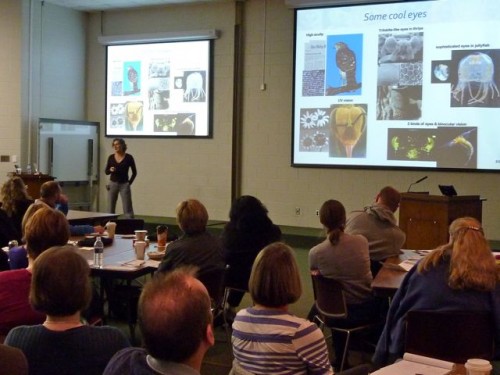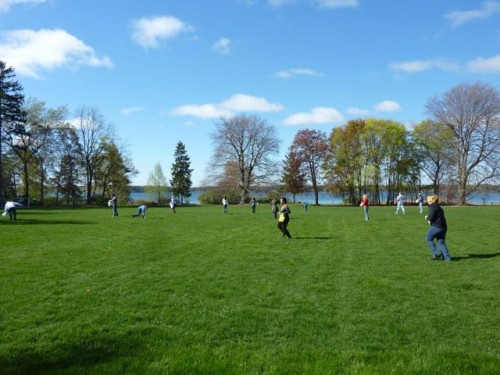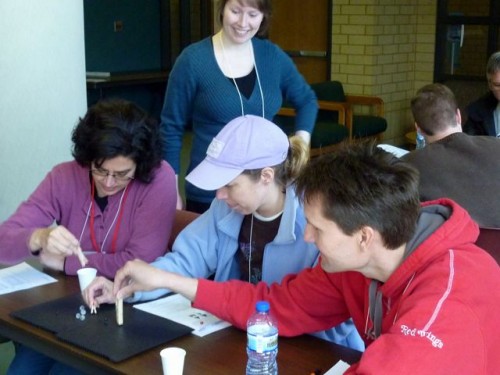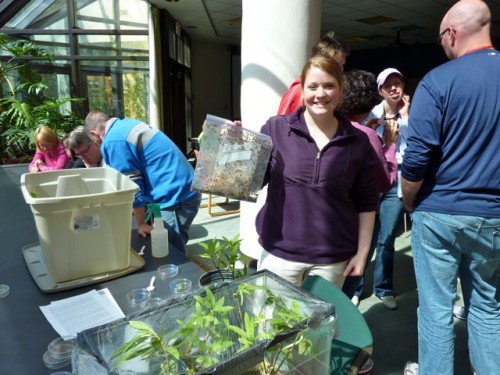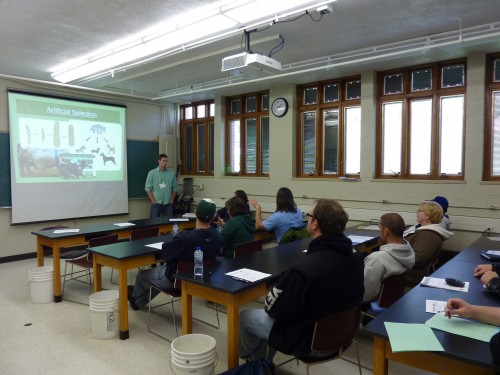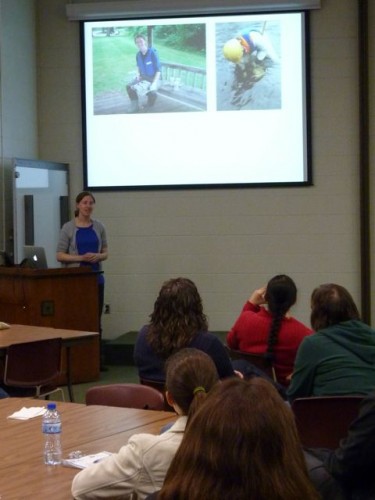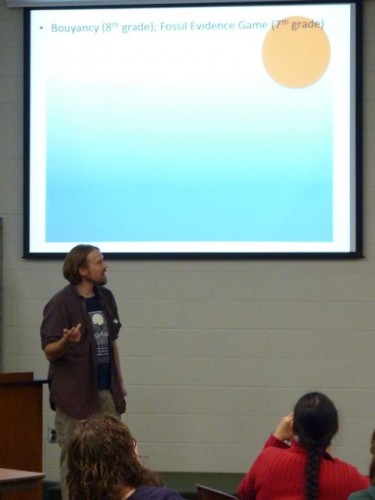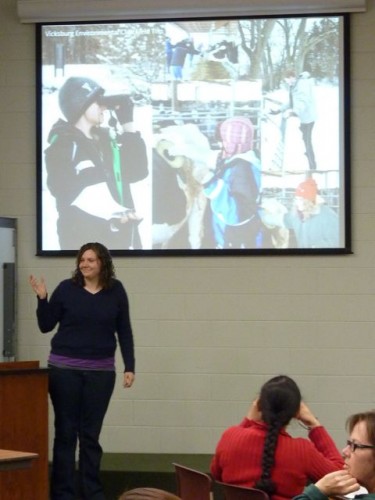By Guest Blogger and KBS GK-12 Friend Joelyn de Lima
April 11, 2012 was a day loaded with fun at KBS. Our GK-12 Fellows outdid themselves developing interesting and informative lessons and games that addressed the topic for the day “Evolution and the Biodiversity of Life” from different viewpoints. Topics ranged from the evolution of beak shape to mimicry and invasiveness.
The day began with Tom Getty giving a brief update we call “The State of the BEST Plots”. Most of our plots are in a good shape, but a few had to be visited by the Round-Up fairy!
The speaker of the day, Jenny Boughman, took over from Tom and spoke on the topic “The Evolution of Complex Adaptations: The Eyes Have It!”. She talked about how evolution works by taking existing structures and changing them bit-by-bit. Since eyes do not fossilize, one way of studying their evolution is to observe present day organisms that have eyes of varied complexity. So first we have Eyespots, which can detect light but not the direction of incident light. These are found in organisms such as Planaria and Euglena. Eyespots gave way to Cup Eyes. Cup eyes can perceive the direction that light comes from, which aids movement, but they cannot form images. These are found in certain marine worms.
The next level of complexity is seen in Pinhole eyes. Organisms such as Nautilus have pinhole eyes that form blurry, low-resolution images and can also detect directionality and movement. This takes us to the next level, which are Fluid-filled eyes. Along with a simple lens, this allows organisms like snails to see clearer images and detect motion. The last and most complex level is the Camera type eye, the eyes that allow you to read this. The camera type eye enables organisms to form finely focused images, evaluate distance, movement, speed, shape, texture, color and to guide its own movement. Dr. Boughman also spoke about three eye related genes that help in tracing the points in the phylogenetic tree at which the eyes evolved different levels of complexity.
After a short break, the first Concurrent Sessions started. In Geeked about Beaks, Alycia demonstrated how bird beaks might evolve in response to available food resources. She used different sized clothespins (the beaks) and beads (food). In her session on Adapting to your Environment: Tanning, Camouflage and Evolution, Jennifer spoke about increasing students’ understanding of the word “adaptation” and the difference between how biologists use the word and it’s more colloquial meaning (change within a generation). During the session Carbon Time Systems and Scale, Jenny explored activities which relate to the soon-to-be-released Next Generation Science Standards. Michael and Kate were back with another fun game in The Hunger Games. They used sets of colored Easter eggs to demonstrate how mimicry behavior is exhibited by species to deceive their predators or prey and how the frequency of mimics depends on the costs and benefits of being a mimic.
During the second set of Concurrent Sessions we had an Aphid Buffet in the Terrace Room hosted by Melissa (former GK-12 Fellow). With the help of over a thousand ladybeetles, her session tested the defensive strategies of Aphids. In Carbon Time Ecosystems, Hannah had her audience become carbon atoms which moved between different carbon pools in an ecosystem. Hannah’s game demonstrated how various processes impact the pools and fluxes of carbon. Tyler’s session “If it Ain’t Broke, It Won’t Get Fixed” had us build phylogenetic trees of shoes and local botanic samples collected at KBS. He focused on teaching about common descent and traits that are shared because of common ancestry – as opposed to analogous. Finally, using tons and tons of ping pong balls, Liz and Marcia conducted a session called Evolving to Invade in which they demonstrated the types of evolution that lead species to become invasive, and how invasive species interact with other organisms in new habitats.
After a delicious lunch, we went fishing with Christine and Nick. In their session on Humans as a Selective Force, they used a fishing simulation to discuss how humans act as selective forces, for instance, changing the size and personalities of commonly fished species. Meanwhile in her session What Time is It? When Plants Bloom and Die, Leila explored the effect of changes in environmental temperatures (climate change) on plant phenology. Her audience froze leaves to study the effect of – well – freezing. In The wonderful World of Biosynthesis Jonathan explored how organisms reorganize organic molecules within themselves. He used molecular models and charts (including a fabulous one of a cow) to demonstrate flow of materials through a food chain. Finally, during Fertilization Protocol for the BEST plots, Leilei brought us back to the BEST plots and explained a simple fertilization protocol for students to perform on their own BEST plots. The audience also went outdoors and practiced by spreading Osmocote on a plot just like our BEST plots. We should see a patch of really lush lawn soon!
A new feature of this Workshop was the session ‘What did my Fellow do this year…. Outside of the Classroom?’. During this session, each Fellow had an opportunity to share major achievements that occurred this year in their research. We were pleased to hear more about grants from the National Science Foundation, papers submitted to scientific journals, completed experiments, and gains in communication and confidence.
And thus ended a truly fun-filled day!

